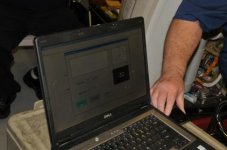Don Bailey
Aluminum
- Joined
- Jun 21, 2013
- Location
- Auburn Hills , Mi.
This is a quick way to tell if your surface plate needs reworking.
https://www.youtube.com/watch?v=hui6pPZH36U
https://www.youtube.com/watch?v=hui6pPZH36U
Follow along with the video below to see how to install our site as a web app on your home screen.
Note: This feature may not be available in some browsers.
1. Where did you get that wild looking height gauge?




This is a quick way to tell if your surface plate needs reworking.
https://www.youtube.com/watch?v=hui6pPZH36U
Don shows in his several You Tube and in here helpful tips or tricks to the trade he uses and has used probably years before most of you were born. He is a successful business man and he is teaching us ways he has done it for years.
Some people like to bitch about just about everything.
Gordon I was not talking about you. I wrote my post before your's.....and I don't read minds.
Don puts his mouth and actions, (time is money) on you tube and I have watched many of his You tube help posts. He spends time helping others with tips of the trade. Bottom line is He is teaching and should be thanked. I read yours and agreed with your dish-washing soap, as I have also used that just last year at American Babbitt where we could not find any Windex in their plant. Worked good. Relax.... :-) Rich
Alex,If say 10 people with the same surface plate do this check and get a readings ranging from .0001 to .001 of total indicated reading. Who do you tell to get thier plate professionally inspected or that their plate is fine? It's impossible to know with certainty.
GOOP, non-pumice, hand cleaner works great at getting surface plates show room clean if you will.
Rub it on, then rub it off. Kind of like waxing car.
Tom
Notice
This website or its third-party tools process personal data (e.g. browsing data or IP addresses) and use cookies or other identifiers, which are necessary for its functioning and required to achieve the purposes illustrated in the cookie policy. To learn more, please refer to the cookie policy. In case of sale of your personal information, you may opt out by sending us an email via our Contact Us page. To find out more about the categories of personal information collected and the purposes for which such information will be used, please refer to our privacy policy. You accept the use of cookies or other identifiers by closing or dismissing this notice, by scrolling this page, by clicking a link or button or by continuing to browse otherwise.
